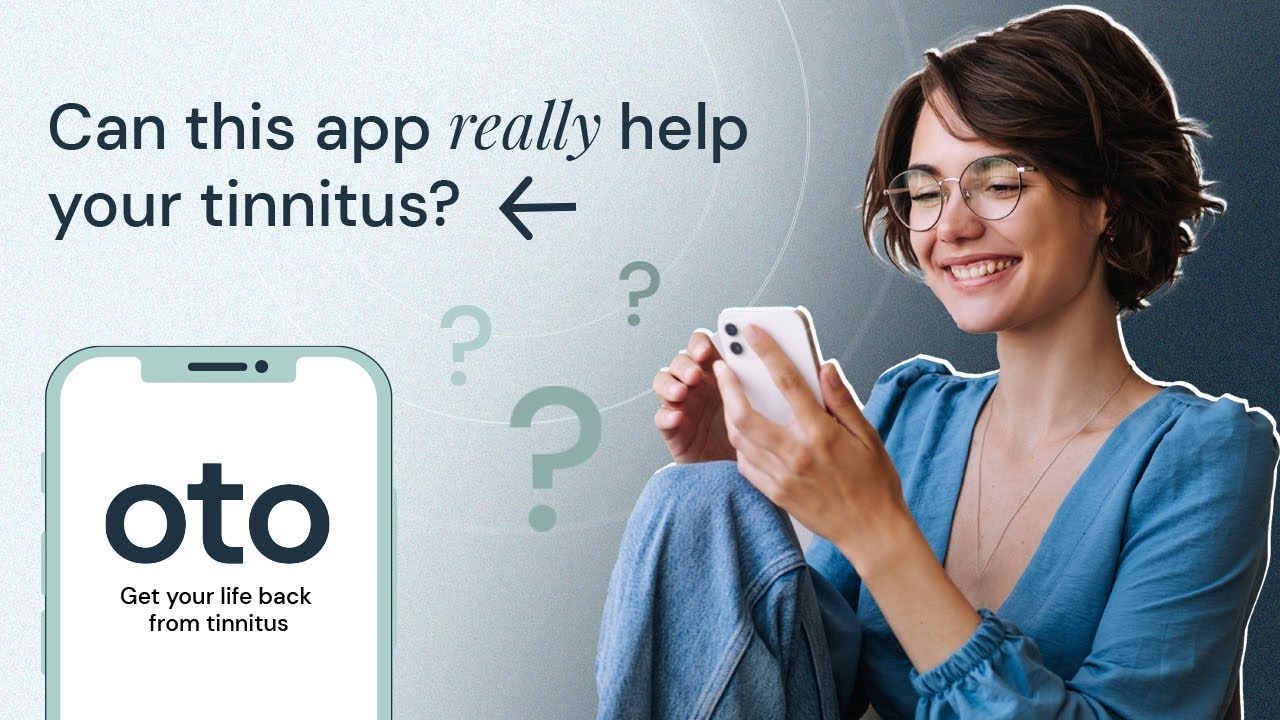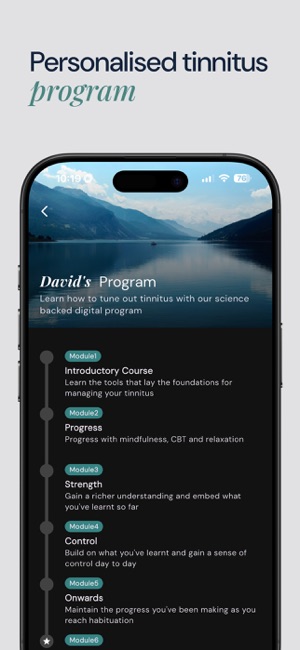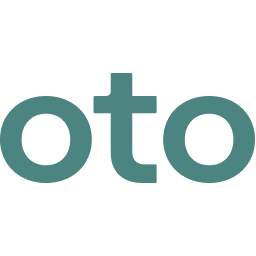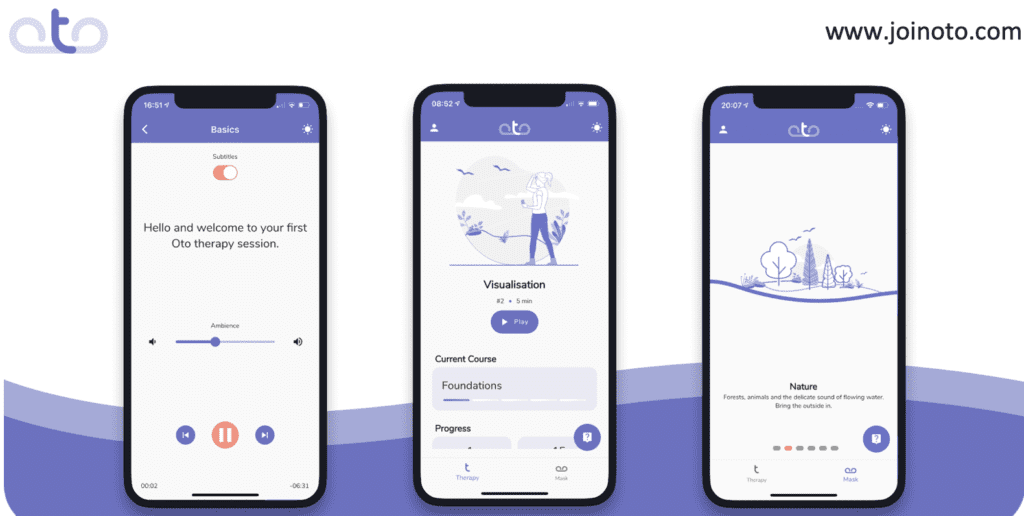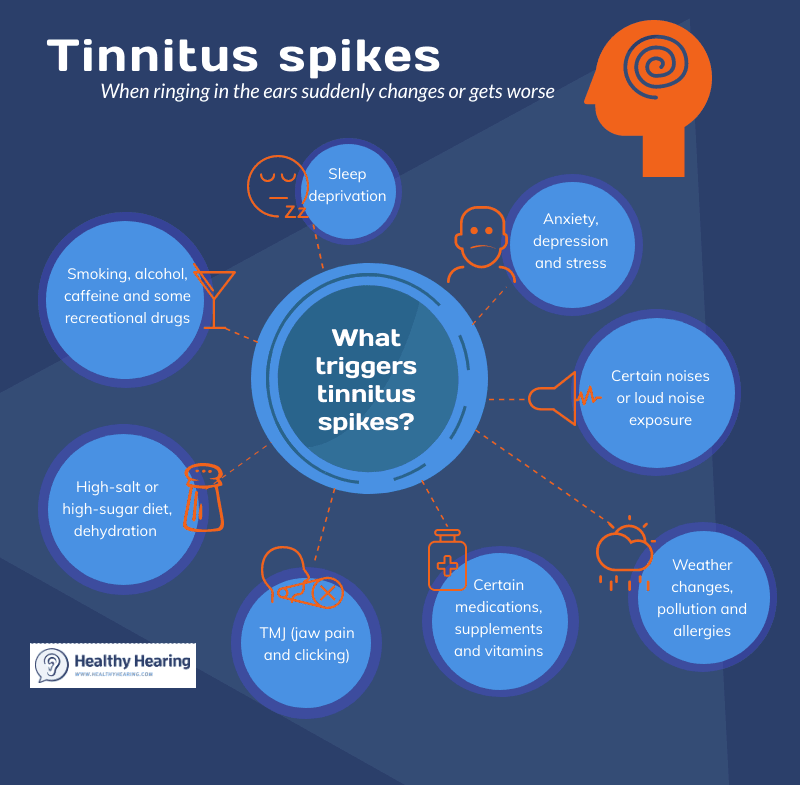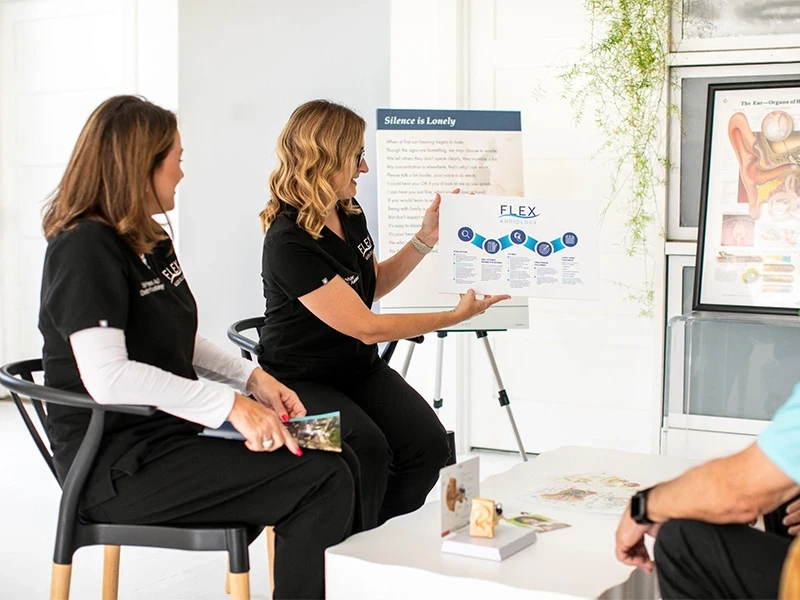Key Takeaways
- Oto provides science-backed cognitive behavioral therapy (CBT) specifically designed for tinnitus relief, with a reported 96% success rate in clinical trials.
- Just 10 minutes of daily use over 90 days has helped many users significantly reduce their tinnitus symptoms through brain retraining techniques.
- The app’s personalized approach includes assessments and customized treatment plans tailored to your specific tinnitus experience.
- Oto doesn’t claim to cure tinnitus but instead helps you habituate to the sounds, reducing their impact on your daily life.
- Direct access to tinnitus coaches within the app provides expert guidance throughout your journey to better hearing health.
Living with the constant ringing, buzzing, or whooshing sounds of tinnitus can be overwhelming. Oto offers a modern solution that fits in your pocket, delivering evidence-based tinnitus relief through your smartphone. The Oto app’s streamlined approach to tinnitus management combines cutting-edge science with practical daily exercises designed to retrain how your brain responds to those persistent sounds.
Tinnitus affects millions worldwide, yet traditional treatments often require expensive equipment or frequent clinic visits. What makes Oto different is its accessibility and focus on cognitive behavioral therapy (CBT) techniques specifically developed for tinnitus sufferers. This approach doesn’t just mask symptoms—it helps your brain learn to process and respond differently to the unwanted sounds.
Tinnitus Relief at Your Fingertips: What Oto App Does
“Oto Tinnitus App …” from www.youtube.com and used with no modifications.
At its core, Oto functions as a guided program that helps you retrain your brain’s response to tinnitus through short, daily audio sessions. Rather than promising to eliminate the sounds completely (which most treatments cannot do), Oto focuses on habituation—teaching your brain to tune out tinnitus the same way it naturally ignores background noises like refrigerator hums or distant traffic. The app delivers a structured program that gradually reduces tinnitus distress by changing how you perceive and react to the sounds.
How CBT-Based Sound Therapy Helps Quiet Tinnitus
Cognitive Behavioral Therapy forms the backbone of Oto’s approach to tinnitus management. Unlike simple sound masking techniques, CBT addresses both the auditory and emotional components of tinnitus. The app guides you through exercises that challenge negative thought patterns associated with tinnitus while simultaneously training your auditory system to become less sensitive to the sounds. This dual approach tackles both the physical perception and emotional reaction to tinnitus.
By redirecting your awareness and helping you concentrate on important sounds in your life, Oto aids in breaking the cycle of anxiety and heightened attention that often makes tinnitus seem louder. The program combines sound therapy, relaxation techniques, and cognitive restructuring to gradually decrease your brain’s threat response to tinnitus. Users report not that their tinnitus disappears entirely, but that it becomes less noticeable and less bothersome in daily life.
The Science Behind Oto’s 10-Minute Daily Sessions
Neuroplasticity—your brain’s ability to form new neural pathways—underlies Oto’s effectiveness. The app’s daily 10-minute sessions are strategically designed to strengthen alternative neural connections that reduce tinnitus perception over time. This time commitment is deliberately brief but consistent, leveraging research showing that regular, focused interventions outperform longer, sporadic treatments for retraining brain responses.
Oto’s program was developed by a team of tinnitus specialists and researchers who understand that lasting relief comes through gradual, consistent exposure to therapeutic techniques. The app’s 90-day structure aligns with clinical findings on the timeframe typically needed for meaningful habituation to occur. Many members report significant symptom relief after completing this three-month journey, with the brain having developed new pathways that process tinnitus sounds differently.
Setting Up Your Personalized Tinnitus Program
“Oto: Tinnitus Relief & Therapy on the …” from apps.apple.com and used with no modifications.
Getting started with Oto begins with understanding your unique tinnitus experience. Unlike one-size-fits-all approaches, the app creates a personalized program based on your specific symptoms, triggers, and lifestyle factors. This customization is critical because tinnitus manifests differently for each person—from the pitch and volume of sounds to their emotional impact and triggering circumstances.
Your journey starts with a comprehensive assessment that captures the nuances of your condition. This evaluation helps the app’s algorithms craft a targeted plan that addresses your particular challenges rather than applying generic solutions. The setup process is straightforward but thorough, ensuring that the treatment you receive is as individualized as your tinnitus experience.
Download and Account Creation Steps
Begin by downloading the Oto app from your device’s app store—it’s available for both iOS and Android platforms. After installation, you’ll create an account with basic information that helps the app track your progress over time. The registration process is streamlined to get you started quickly, requiring only essential details to establish your profile. Once your account is active, the app guides you through an intuitive onboarding experience that explains how the program works and what to expect from your daily sessions.
Completing Your Initial Assessment
After creating your account, you’ll be guided through a comprehensive tinnitus assessment that takes approximately 10 minutes to complete. This questionnaire covers everything from the characteristics of your tinnitus sounds to how they affect your sleep, concentration, and emotional well-being. Be completely honest in your responses—the more accurate information you provide, the better tailored your program will be. The assessment includes questions about your tinnitus history, severity fluctuations, and situations that seem to worsen or improve your symptoms.
Understanding Your Customized Treatment Plan
Once your assessment is complete, Oto generates a personalized treatment plan targeting your specific tinnitus profile. This plan outlines the progression of daily sessions, estimated timelines for improvement, and the specific CBT techniques that will form the backbone of your therapy. You’ll receive a visual representation of your program journey, breaking down the different phases from initial habituation exercises to more advanced cognitive restructuring techniques. The plan also highlights key milestones to watch for, helping you recognize progress even when changes happen gradually.
Your customized plan may emphasize different aspects of tinnitus management depending on your assessment results. For instance, if sleep disruption is your primary concern, your program might initially focus on bedtime relaxation techniques and sleep-specific sound therapy. Alternatively, if anxiety and stress exacerbate your symptoms, your early sessions might concentrate more heavily on mindfulness and cognitive reframing exercises.
Making the Most of Your Daily 10-Minute Sessions
“Oto | Tune Out Tinnitus, Tune Back Into …” from www.joinoto.com and used with no modifications.
Consistency is the cornerstone of success with Oto’s tinnitus program. Neuroplastic changes—the brain adaptations that lead to habituation—require regular, repeated practice rather than sporadic intensive sessions. Commit to your daily 10-minute session as a non-negotiable part of your routine, similar to brushing your teeth or taking medication. Many users find success by attaching their Oto session to an existing daily habit, such as having morning coffee or winding down before bed.
While 10 minutes might seem brief, this duration is scientifically determined to be optimal for maintaining engagement without overwhelming users. The focused, quality nature of these sessions proves more effective than longer, less consistent practice. Remember that you’re engaging in brain training—and like physical training, steady, regular workouts yield better results than occasional marathon sessions.
Finding the Right Time and Place
Select a consistent time when interruptions are unlikely and your mind is receptive to focused attention. Morning sessions often work well as the brain is fresh and less cluttered with the day’s concerns, while evening sessions can help process the day’s tinnitus experiences before sleep. Experiment during your first week to discover which timing works best with your natural rhythms and schedule. Create a designated space for your sessions—ideally somewhere quiet, comfortable, and free from distractions where you can fully engage with the audio content.
How to Properly Use Headphones for Best Results
Quality headphones significantly enhance your Oto experience by delivering precise sound therapy elements directly to your auditory system. Over-ear headphones generally provide the best sound quality and noise isolation, though comfortable earbuds can work well too. Set your volume at a moderate level—loud enough to clearly hear all elements but not so loud that it could potentially contribute to hearing issues. The app’s sound therapy should never be uncomfortable or painful; if it is, immediately lower the volume.
Before beginning each session, take a moment to ensure your headphones are properly positioned and comfortable enough for the full 10 minutes. Test the sound briefly before starting the formal session, adjusting as needed for the clearest experience. For those with severe tinnitus in one ear, experiment with balancing the audio slightly toward the affected side, though generally balanced stereo delivery is recommended for most users.
Tracking Your Progress in the App
Oto’s progress tracking features provide valuable feedback on your habituation journey. The app monitors your session consistency, symptom severity ratings, and completion of various program milestones. Pay particular attention to the tinnitus distress scale measurements, which often show improvement before you consciously notice changes in the actual sounds. Regular check-ins allow the app to refine your program based on your responses, adjusting the therapy elements to address ongoing challenges or accelerate progress in areas showing improvement.
Beyond Basic Features: Advanced Oto Tools
“Oto Launches Mobile Tinnitus App | The …” from hearingreview.com and used with no modifications.
As you progress through your initial sessions, you’ll gain access to increasingly sophisticated tools designed to deepen your tinnitus management skills. These advanced features build upon the foundational techniques while introducing more nuanced approaches to habituation. Many users discover that these specialized tools help them navigate particularly challenging aspects of their tinnitus experience. From customizable sound environments to detailed analytics, these premium features provide additional layers of support for your journey toward tinnitus relief.
In-App Tinnitus Coaching Support
One of Oto’s most valuable advanced features is direct access to tinnitus coaches through the app’s messaging system. These specialists can answer specific questions about your symptoms, suggest technique modifications, or provide encouragement during difficult periods. When experiencing a challenging tinnitus spike or feeling uncertain about an aspect of your program, reaching out to your coach can provide timely, expert guidance tailored to your situation.
Coaching interactions are designed to be brief but impactful, focusing on actionable advice rather than lengthy consultations. Most queries receive responses within 24-48 hours, making this resource especially helpful for addressing obstacles between regular sessions. The coaches have extensive experience with diverse tinnitus presentations and can offer perspectives that might not be covered in the standard program content.
Consider scheduling a monthly check-in with your coach even when things are going well, as they can often identify subtle opportunities for improvement or provide validation of the progress you may not fully recognize yourself. This proactive approach maintains momentum and ensures you’re maximizing the benefits of the program.
Sound Library and Personalization Options
Oto’s extensive sound library goes far beyond basic white noise, offering specialized acoustic environments designed specifically for tinnitus relief. The library includes nature sounds, ambient backgrounds, and specially engineered sound profiles that can complement your tinnitus frequency range. As you progress through the program, you’ll discover which sound environments most effectively reduce your awareness of tinnitus during daily activities, sleep, or high-stress situations.
The personalization options allow you to fine-tune sound characteristics including volume balance, frequency emphasis, and rhythm patterns. Many users create different sound profiles for various scenarios—a gentler soundscape for bedtime versus a more engaging one for focused work periods. The app remembers your preferences and can suggest modifications based on your reported effectiveness ratings. This customization becomes increasingly valuable as your brain’s response to tinnitus evolves throughout the program.
Goal Setting and Achievement Tracking
The goal-setting features within Oto help transform abstract hopes like “reduce my tinnitus” into concrete, measurable objectives. You can establish both short-term targets (completing daily sessions for two weeks straight) and longer-term ambitions (enjoying a movie without tinnitus distraction). The app’s achievement system rewards consistency and progress with virtual badges and milestone celebrations that provide motivational boosts during your journey. Regular achievement notifications serve as powerful reminders of how far you’ve come, especially during periods when progress feels slow.
Advanced tracking tools generate visualizations of your tinnitus journey, including session consistency, symptom severity trends, and emotional response patterns. These data-driven insights often reveal improvement patterns that might otherwise go unnoticed in day-to-day experience. Many users report that seeing their progress graphed over time provides both validation and motivation to continue with the program, particularly when they can correlate specific activities or techniques with positive trend shifts.
Common Challenges and How to Overcome Them
“Tinnitus spikes – Why they happen, and …” from www.healthyhearing.com and used with no modifications.
The path to tinnitus habituation isn’t always smooth, and understanding common obstacles can help you navigate them successfully. Most users encounter periods where progress seems to plateau or even temporarily reverse. These fluctuations are normal parts of the neuroplastic retraining process and don’t indicate program failure. The key is maintaining consistency through these challenging phases rather than abandoning the approach when immediate results aren’t apparent.
External factors like stress, sleep disruption, or illness can temporarily intensify tinnitus perception even while following the program diligently. During these periods, focus on the techniques that provide immediate relief rather than worrying about long-term progress. The resilience skills you develop through these challenges often become valuable tools in your ongoing tinnitus management strategy.
When You Don’t Notice Immediate Results
Patience is crucial during the early weeks of the Oto program, as neuroplastic changes develop gradually beneath your conscious awareness. Many users report feeling frustrated around the two-week mark when the novelty has worn off but significant relief hasn’t yet manifested. During this phase, shift your focus from symptom reduction to consistent engagement with the process itself. Celebrate session completion rather than symptom changes, and trust in the scientifically validated approach that has helped thousands before you.
If you reach the one-month mark without noticeable improvement, don’t despair—this timeline varies significantly between individuals. Instead, reach out to your in-app coach to review your technique implementation and possibly adjust your program parameters. Sometimes small modifications to session timing, sound selection, or cognitive exercise approach can jumpstart progress for those experiencing delayed responses. Remember that the reported 90-day timeframe represents an average, with some users requiring longer periods to achieve similar results.
Dealing with Tinnitus Flare-Ups While Using Oto
Tinnitus intensity naturally fluctuates, and temporary flare-ups don’t mean your overall progress has reversed. During these episodes, the app offers specialized “rescue sessions” designed specifically for symptom spikes. These abbreviated interventions focus on immediate relief techniques rather than long-term habituation. When experiencing a flare-up, increase your hydration, minimize caffeine and alcohol, protect yourself from loud environments, and prioritize quality sleep—these physical supports complement the app’s cognitive approaches.
Document the circumstances surrounding flare-ups using the app’s journaling feature, which can reveal patterns around specific triggers like certain foods, stress situations, or environmental factors. This information becomes invaluable for both prevention and management strategies. Some users find that pre-emptively using the app’s sound therapy features before entering known triggering situations (like noisy social gatherings) can significantly reduce the intensity and duration of subsequent flare-ups.
Maintaining Consistency with Your Program
Consistency challenges affect virtually all users at some point in their tinnitus journey. The app’s reminder system can be customized with different notification styles, timing options, and motivational messages to help maintain your daily practice. Many successful users incorporate “if-then” planning—mentally linking your session to an established daily activity so it becomes automatically triggered. For example: “If I finish breakfast, then I’ll do my Oto session.”
When life inevitably disrupts your routine, focus on getting back on track rather than dwelling on missed sessions. The app’s calendar view helps maintain accountability without inducing guilt, showing your overall consistency pattern rather than emphasizing occasional gaps. Consider involving a supportive friend or family member in your consistency goals, either through the app’s share features or by establishing a simple check-in system where they ask about your progress periodically.
Real Results: What to Expect From Consistent Use
“Oto Tinnitus Treatments | Modern Relief …” from flexaud.com and used with no modifications.
When consistently following the Oto program, most users report meaningful improvements in their relationship with tinnitus. The changes typically occur across multiple dimensions simultaneously—reduced sound awareness, decreased emotional distress, improved sleep quality, and enhanced ability to concentrate despite ongoing tinnitus. Unlike approaches that only temporarily mask symptoms, Oto’s habituation-based method creates lasting neurological adaptations that persist even after completing the formal program.
The most successful users describe their tinnitus transitioning from a dominating presence to a background sensation that rarely captures their attention. This shift represents the essence of successful habituation—the sounds may technically still exist, but they no longer trigger the emotional and attentional responses that create distress. Many compare this change to how you might initially notice a ticking clock in a quiet room but soon forget it’s there as your brain filters it from conscious awareness. For more insights on managing tinnitus, explore Progressive Tinnitus Management.
Typical Timeline for Noticing Improvements
Most users report a gradual improvement curve that accelerates as they progress through the program. The first noticeable changes often appear between weeks 2-4, typically as brief moments when you suddenly realize you haven’t noticed your tinnitus for a while. By the 6-8 week mark, many users experience reduced emotional reactions to their tinnitus even when they do notice it. The most significant improvements generally manifest between months 2-3, with continued gradual progress for several months afterward as the new neural pathways strengthen and become more automatic. While individual timelines vary considerably based on tinnitus severity, duration, and personal neuroplasticity factors, this general progression pattern holds true for most consistent users.
Success Indicators Beyond Symptom Reduction
- Decreased thought frequency about tinnitus during daily activities
- Reduced anxiety when entering previously challenging environments
- Improved ability to focus on conversations in noisy settings
- Better sleep quality and reduced time to fall asleep
- Diminished need for external masking sounds throughout the day
While directly measuring tinnitus volume remains challenging, these functional improvements provide tangible evidence of progress. The app’s assessment tools help track these changes objectively, often revealing improvements you might not fully recognize during day-to-day life. Many users report that friends and family notice their behavioral changes—like increased engagement in social situations or reduced irritability—before they themselves fully appreciate the extent of their improvement.
Beyond symptom management, many users develop valuable psychological skills that benefit other life areas. The mindfulness techniques, cognitive restructuring approaches, and attention control practices have applications far beyond tinnitus management. Several users report applying these same skills to manage chronic pain, work-related stress, or other health challenges. This “psychological side benefit” represents an often unexpected but significant outcome from consistent program engagement.
Perhaps most importantly, successful users report a fundamental shift in their relationship with tinnitus—from viewing it as an enemy to be defeated to recognizing it as simply a neutral bodily sensation that doesn’t require attention or emotional response. This perspective transformation often marks the true turning point in their journey, freeing them from the exhausting cycle of fighting against their own auditory experience. Many describe this shift as the difference between “living with tinnitus” and living well despite tinnitus.
Former Oto users who maintain their habituation generally report that even when they notice tinnitus sounds, these perceptions no longer trigger the anxiety, frustration, or hopelessness that once defined their experience. This emotional decoupling represents the program’s ultimate success—creating sustainable relief that doesn’t depend on continuous active management. For more on managing tinnitus, you might explore progressive tinnitus management techniques.
Take Control of Your Tinnitus Today
Tinnitus doesn’t have to control your life or limit your experiences. With Oto’s science-backed approach, consistent 10-minute daily sessions, and personalized support, you can develop the skills to relegate those persistent sounds to the background of your awareness. Remember that while tinnitus itself might not disappear completely, your brain’s response to it can fundamentally change—and that’s where true relief begins. Oto provides a structured path to this transformation, guiding you through each step of the habituation journey with expertise developed by leading tinnitus specialists.
Frequently Asked Questions
As you consider whether Oto is right for your tinnitus management journey, these common questions and answers may help clarify your expectations and optimize your experience with the app. Remember that individual results vary, but these responses reflect the typical user experience based on clinical research and user feedback.
How long should I use the Oto app each day for best results?
The standard recommendation is 10 minutes daily, which research has shown provides the optimal balance between effectiveness and sustainability. This duration was specifically chosen to ensure consistent practice without becoming burdensome. Some users choose to complete additional optional exercises during particularly challenging periods, but the core program is designed around this focused 10-minute commitment. Consistency matters more than duration—regular daily sessions yield better results than longer but sporadic practice.
Can I use Oto alongside other tinnitus treatments?
Yes, Oto works well as part of a comprehensive tinnitus management approach. Many users successfully combine the app with hearing aids, sound generators, dietary modifications, or other therapies recommended by their healthcare providers. In fact, the cognitive techniques learned through Oto often enhance the effectiveness of other treatments by improving your psychological response to tinnitus. Simply inform your healthcare provider about all the approaches you’re using to ensure they complement rather than counteract each other.
Will Oto completely eliminate my tinnitus?
Oto doesn’t claim to eliminate tinnitus sounds completely—very few interventions can make such a promise. Instead, the app focuses on habituation, teaching your brain to tune out tinnitus similar to how you naturally ignore background noises like refrigerator hums or distant traffic. Successful users typically report that while they may still hear tinnitus when they specifically listen for it, the sounds no longer dominate their attention or trigger negative emotional responses. This change in relationship with tinnitus—rather than its complete disappearance—represents the program’s primary goal and brings significant relief for most users. For more insights, you can explore progressive tinnitus management techniques.
Do I need special headphones to use the Oto app effectively?
While special tinnitus headphones aren’t required, using good quality headphones significantly enhances your experience with the app’s sound therapy components. Over-ear headphones generally provide the best sound quality and isolation, though comfortable earbuds work well for many users. The most important factors are comfort (since you’ll wear them daily) and sound clarity rather than specific technical specifications.
If you have hearing loss alongside your tinnitus, consider using headphones compatible with hearing aids or discussing options with your audiologist. Some users with severe tinnitus find bone-conduction headphones particularly effective as they deliver sound through different pathways, but standard headphones work well for most people following the program.
Is the Oto app covered by insurance or healthcare plans?
Coverage varies significantly depending on your location, insurance provider, and specific plan details. An increasing number of health insurers recognize digital therapeutics like Oto as cost-effective treatment options, especially when prescribed or recommended by healthcare providers. Check with your insurance company about coverage for “digital cognitive behavioral therapy” or “digital tinnitus management.” Some flexible spending accounts (FSAs) and health savings accounts (HSAs) may reimburse app subscription costs when accompanied by a healthcare provider’s recommendation.
Even without direct insurance coverage, many users find Oto more economical than traditional tinnitus treatments that require multiple clinical visits. Some employers now include digital health applications in their wellness benefits, and patient assistance programs may be available for those experiencing financial hardship. The Oto team can often provide documentation to support insurance claims or reimbursement requests.
Remember that your investment in tinnitus management pays dividends in improved quality of life, better sleep, reduced anxiety, and enhanced concentration—benefits that extend far beyond the immediate symptom relief. Many long-term users report that the skills gained through the program continue providing value years after their initial subscription.

